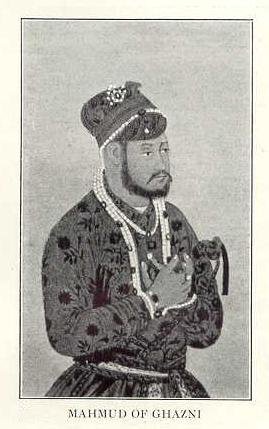The Attacks of Mahmoud GHAZNI (P1/3)


One of the most savage of all invaders was Mahmoud Ghazni (Muhammad of Ghazni). He had vowed to invade India every year in order to destroy the worship of deities, which is part of the Vedic tradition. He also wanted to kill the infi dels, capture slaves, and collect whatever he could of India’s vast wealth. It was 1000 CE when he had defeated Raja Jaipal of the Shahiya dynasty in Kabul. This was the defense for India’s northwest area.
He collected 250,000 dinars as indemnity, but then attacked and plundered Bhatiya in 1004 CE. He stayed there for a few years with his mullahs to convert the Hindus, but then went on to capture Nagarkot (Kangra) in 1008. His booty was many thousands of coins and gold and silver, and many precious stones and embroidered cloth. Here he also kindled his appetite for slaughtered Hindus, worthy slaves, and portable wealth.
In 1011 he went on to attack the undefended city of Thanesar, where he destroyed numerous temples and deities. The main deity was Chakra Swami which was taken back to Ghazni and there put on the street of the public square for the defilement under the feet of faithful Muslims.
According to the descriptions of the Islamic record Tarikh-i-Yamini of Utbi (Abu Nasr Muhammad ibn Muhammad al Jabbaru’l-Utbi), Mahmoud’s secretary, “The blood of the infi dels fl owed so copiously [at Thanesar ] that the stream was discolored, notwithstanding its purity, and people were unable to drink from it. The Sultan returned with plunder which is impossible to count. Praise be to Allah for the honor he bestows on Islam and Muslims.”
The Muslim historical record Kitabu’l-Yamini, also by Utbi, relates that Mahmoud of Ghazni next raided the city of Nardin in the Punjab, a town with a history that goes back thousands of years.
It is recorded: “After the Sultan had purifi ed Hind from idolatry, and raised mosques therein, he determined to invade the capital of Hind to punish those who kept idols and would not acknowledge the unity of God… He marched with a large army in the year AH 404 (1013 CE) during a dark night…” Here it is completely contradictory in regard to “the unity of God.”
How is there any understanding of the unity of God when to Subuktigin there was only one God to live or kill for? He was so elementary in his thinking he could not see the unity of God in any other God but his own, or I should say his own limited and most basic understanding of God. But his ignorance continues when he cannot understand the vastness of time and how long ago the world had been created. The Kitabu’l-Yamini goes on to relate: “A stone was found there in the temple of the great Budda on which an inscription was written purporting that the temple had been founded 50,000 years ago.
The Sultan was surprised at the ignorance of these people, because those who believe in the true faith represent that only seven hundred years have elapsed since the creation of the world, and signs of resurrection are even now approaching. The Sultan asked his wise men the meaning of this inscription and they all concurred in saying that it was false, and no faith was to be put in the evidence of a stone.” Thus, their insurmountable ignorance kept them from understanding the profound nature and antiquity of what they were seeing, having been blinded by their own religious bias.
In 1013, Mahmoud set his sites on Nandana, the new capital of King Anandapal, of the Shahiya dynasty. Here the Hindus fought hard, but lost, which paved the way for the destruction of more temples, and the slaughter of innocent civilians. Utbi described that again the Sultan brought back immense booty, and so many slaves that they sold most cheaply. Even noble men of India became the slaves of common shopkeepers.
Source: Stephen Knapp-Crimes Against India
DISCLAIMER: The author is solely responsible for the views expressed in this article. The author carries the responsibility for citing and/or licensing of images utilized within the text.
